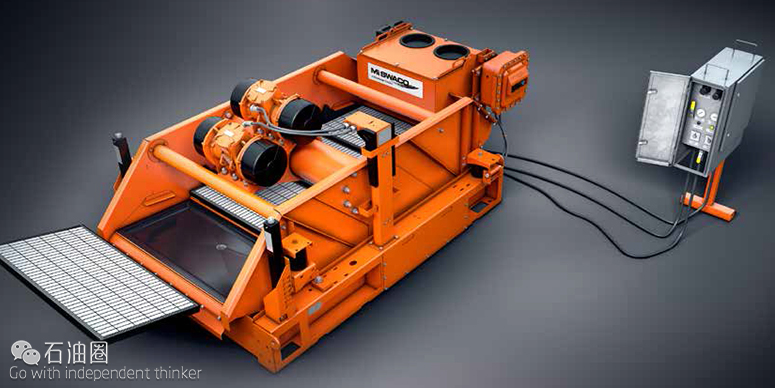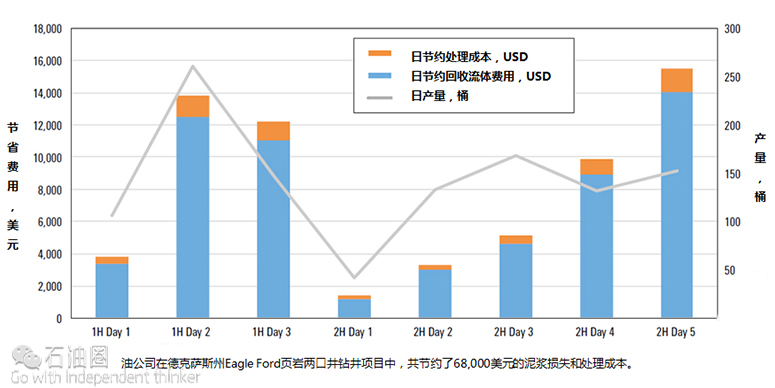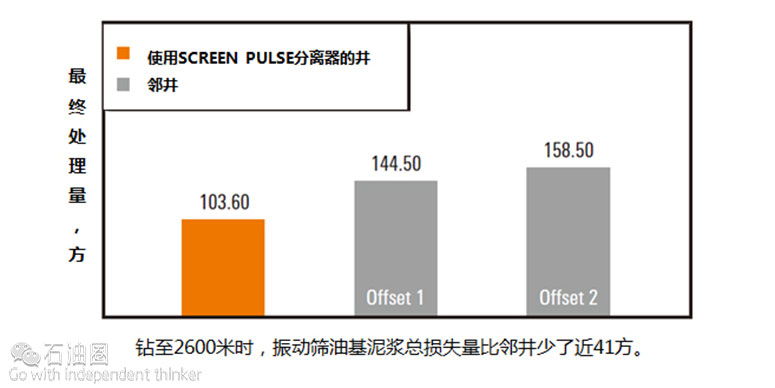To meet ever-stringent global onshore and offshore disposal standards, cuttings must be stripped of free fluid, meaning higher treatment, transportation and disposal costs for operators. The conventional approach to improving separation can cause cuttings attrition that compromises solids removal efficiency and generates formation-damaging fines that hinder drilling fluid performance and can require continuous treatment.
In today’s costly operating environment, discarded “free fluid” includes drilling fluids that could be reused in active systems.
Pulsating technology joins ultra-efficient screens for the utmost in cuttings treatment, fluid recovery.
The SCREEN PULSE fluid and cuttings separator is a simple retrofit installation delivering enhanced shale shaker performance by creating a suction effect under the screen surface, reaping all the benefits of ultra-fine screen separation efficiency.
Efficient design and operation
An automatic pneumatic control panel operates the SCREEN PULSE system on up to three shakers simultaneously. The system utilizes a lightweight pan, installed as a drop-in, within the shaker bed underneath the last screen on the shaker; an air valve mechanism is attached to the pan and creates a gentle suction force, pulling all the residual drilling fluid from the cuttings surface as they travel towards the discharge end of the shaker.
In addition to enhanced drilling fluid recovery, the SCREEN PULSE system also generates drier cuttings from the shaker. This reduces waste handling and disposal costs and minimizes crane or heavy equipment movements.
The SCREEN PULSE fluid and cuttings separator from M-I SWACO — combined with our other patented shaker technology and high-capacity lightweight composite screens — delivers optimum efficiency, improves rig site safety, and significantly reduces overall drilling costs.
SCREEN PULSE Separator Reduces MOC by 28% and Saves 10% on Final Waste Disposal Volume
Operator Uses SCREEN PULSE Separator, Reduces Average Per-Foot SBM Costs by 30%
Reduce costs by reducing SBM mud loss
When drilling the Eagle Ford Shale in South Texas, the operator wanted to maintain optimal drilling conditions, including high ROP, while minimizing costs associated with SBM loss and the disposal of oil-wet cuttings. In high-ROP drilling environments, cuttings are very large and thus carry high volumes of SBM to surface. The cuttings require disposal and cannot be recovered, which results in mud loss as well as disposal costs.
Use high-efficiency SCREEN PULSE separator
M-I SWACO recommended an integrated suite of products to help the operator achieve its drilling objectives. The SCREEN PULSE fluid and cuttings separator was chosen to help reduce the costs of disposal and mud loss in the high-ROP drilling environment. The separator was installed on MONGOOSE PRO shale shakers and used in combination with DURAFLO† composite replacement screens.
The SCREEN PULSE separator’s simple retrofit installation improves shale shaker performance by creating a suction effect under the screen surface, achieving ultra-fine screen separation efficiency. The dual-motion MONGOOSE PRO shaker recovers significant volumes of reusable drilling fluids and features the ability to easily switch between high-volume capacity and normal modes as drilling conditions change. Using this type of shaker with lightweight DURAFLO screens improves fluid-handling capacity and solids-control performance.
Decreased costs by 30%, saved USD 68,000
Using this solution on two wells in the Eagle Ford Shale, the operator was able to achieve its drilling objectives and cut costs by reducing both SBM loss and associated disposal costs for oil-wet cuttings. On average, the operator reduced the SBM cost per foot to USD 24.34, a 30% cost reduction, and reduced disposal cost per well to USD 45,000, a 13.5% cost reduction. The total net savings incurred by using the SCREEN PULSE separator and other M-I SWACO products was more than USD 68,000. Based on these results, the operator is now using this technology on all its rigs in the Eagle Ford Shale.
SCREEN PULSE Separator Reduces MOC by 28% and Saves 10% on Final Waste Disposal Volume
Enhancing fluid recovery and cuttings dryness
A South American operator was drilling onshore wells in the Neuquen basin of Argentina. OBM cuttings generated from drilling waste had to be transferred to a local third-party treatment company for safe handling. The drilling program started with water-base spud mud for the top hole section followed by OBM for the intermediate and production sections until reaching TD. Field formations were mainly coarse mineralized sandstone and conglomerate layers.
The operator wanted to enhance fluid recovery and cuttings dryness by reducing OBM drilling fluid retention on the drilled cuttings. Its goal was also to reduce the number of secondary shakers by using a three-step drying process at the first solids control barrier. Working with M-I SWACO, the operator decided to drill four test wells.
Reducing fluid retention on cuttings
M-I SWACO selected the SCREEN PULSE separator for use on one trial well because it reduces HSE risks and is very compact, efficient, and easy to install and operate. The entire system consists of a compact, lightweight pulse control panel and carbon fiber drop-in pans. The only external equipment required is a compressed air source. M-I SWACO recommended keeping at least one secondary shaker to maximize waste reduction and fluid recovery, creating a three-step drying process.
The separator was installed on three primary shakers working simultaneously. SCREEN PULSE separator was applied to the last shaker screen on each shaker to reduce drilling fluid retention on the cuttings. During the trial, engineers recorded process data, MOC, OBM lost volumes per shaker, final disposal waste volumes, and QHSE observations. Samples were collected during steady-state conditions coinciding with representative drilling conditions for each day. All results and base data from previous wells were compared based on documented final recaps, daily reports, and mud reports from fluid and solids control services.
Increasing fluid recovery 30%
The SCREEN PULSE separator worked continuously for more than 260 hours throughout the 11-day trial with zero NPT. Cuttings retention of the drilling fluid averaged below 30%, enhancing OBM recovery and cuttings dryness. Average MOC was 28%, and fluid recovery was 30% more than the best earlier well results. Savings on the final disposal volume after adjustment was more than 10%. The operator also saved USD 48,720 on fluid recovered and on the cuttings reduction.
SCREEN PULSE Separator Reduces Drilling Fluid on Cuttings by 28% and Saves USD 39,950, Argentina
Enhance fluid recovery and improve cuttings dryness
Wintershall was drilling several onshore wells in the Neuquén basin of Argentina using WBM. The drilling program began with water-base bentonite spud mud for the upper sections, followed by KLA-SHIELD* enhanced-polymer water-base drilling fluid for the intermediate sections to TD. The formations encountered during drilling were mainly coarse mineralized sandstone and claystone layers in the first three intermediate sections; limestone, silt, and calcareous formations in the fourth intermediate section; and shales and bituminous marl in the production sections. The operator wanted to increase the water-base drilling fluid recovery and cuttings dryness by reducing the water-base drilling fluid volume on the drilled cuttings.
Reduce retention of cuttings in drilling fluid with SCREEN PULSE separator
M-I SWACO recommended the SCREEN PULSE separator to Wintershall as the optimal solution for meeting the operator’s goals. The operation called for installing the SCREEN PULSE separator on three existing primary shakers used for the intermediate and production sections. The operator aimed to evaluate mud on cuttings under actual conditions using the SCREEN PULSE separator with the primary shakers.
The SCREEN PULSE separator consists of a pulse control panel and carbon fiber drop-in pans installed under the last screen on the discharge end of the shakers to reduce fluid retention on the cuttings. This pneumatic system applies compressed air to the pan assemblies, creating a vacuum that enhances fluid recovery and cuttings dryness.
Increased fluid recovery and gained significant economic benefits
Samples were collected during steady-state conditions and when drilling conditions were representative of daily operations. During the field trial, process data as well as mud on cuttings, WBM lost volumes per shaker, final disposal waste volumes, and other observations were recorded. In addition, an analysis through laboratory field tests on the well was performed to compare performance of the primary shakers when the SCREEN PULSE system was either on or off.
The SCREEN PULSE separator performed continuously for 17 operating days with 17 brief standby off periods. Evaluating the field trial results showed the SCREEN PULSE separator helped achieve a final mud on cuttings average of 40% through the entire well. Drilled solids in the drilling fluid with the SCREEN PULSE separator were reduced by approximately 28% through the shakers, which enhanced fluid recovery and cuttings dryness. Savings on the final disposal volume after adjustment was greater than 21%. With the SCREEN PULSE separator, Wintershall saved an estimated USD 39,950.

 石油圈
石油圈



